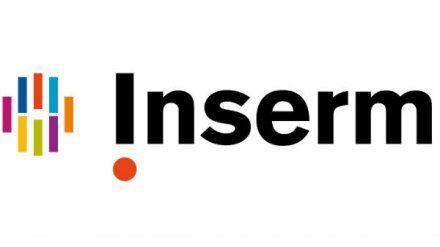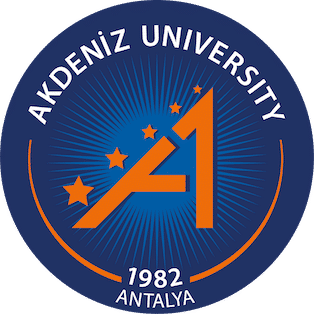预约演示
更新于:2025-05-07
Coma, Post-Head Injury
脑损伤后昏迷
更新于:2025-05-07
基本信息
别名 Coma, Post Concussive、Coma, Post Head Injury、Coma, Post Trauma + [41] |
简介 Prolonged unconsciousness from which the individual cannot be aroused, associated with traumatic injuries to the BRAIN. This may be defined as unconsciousness persisting for 6 hours or longer. Coma results from injury to both cerebral hemispheres or the RETICULAR FORMATION of the BRAIN STEM. Contributing mechanisms include DIFFUSE AXONAL INJURY and BRAIN EDEMA. (From J Neurotrauma 1997 Oct;14(10):699-713) |
关联
2
项与 脑损伤后昏迷 相关的药物靶点- |
作用机制- |
非在研适应症- |
最高研发阶段批准上市 |
首次获批国家/地区 日本 |
首次获批日期2003-10-22 |
7
项与 脑损伤后昏迷 相关的临床试验NCT06930261
Dopaminergic Disruption Induced by Traumatic Coma: Multimodal Neuroimaging Approaches to Characterize Dopaminergic Pathways Using 18F-LBT-999 PET
The neural correlates of consciousness have been studied at the macroscopic level. However, the neurochemical basis of these processes remains poorly understood. The mesocircuit theory challenges the cortico-centric view of consciousness. It highlights the role of subcortical regulation by dopaminergic circuits, including the ventral tegmental area and striatal loops. Experimental data show the importance of dopamine in consciousness recovery. Animal TBI studies link dopamine deficits to loss of consciousness and recovery. In humans, imaging studies show disrupted dopaminergic networks in chronic consciousness disorders. Yet, early-phase dopaminergic disruptions in acute coma remain underexplored.
Molecular imaging with PET or SPECT offers insights into dopamine system disturbances. The novel radiotracer 18F-LBT-999 enables detailed imaging of dopaminergic circuits, providing better spatial resolution and quantification than SPECT.
This proof of concept study aims to explore acute subcortical dopaminergic loop disruptions. It will combine 18F-LBT-999 PET with structural and functional MRI in post-traumatic coma.
Methods : Patients with severe traumatic brain injury (TBI) admitted to the intensive care unit state will be evaluated within 30 days post-injury. Participants will undergo clinical assessment after sedation clearance and will be categorized into three groups: (1) TBI-COMA (severe TBI with persistent coma), (2) TBI-REC (severe TBI with recovery of command-following), and (3) healthy controls. All participants will undergo clinical evaluations, anatomical and functional MRI, and molecular imaging: 18F-LBT-999-PET. Neurological outcome (CRS-r scale), Disability rating scale (DRS), Quality of life (QUOLIBRI) and axtrapyramidal symptoms (MDS-UPDRS) will be assessed at 3 month.
Primary Hypothesis: Acute post-traumatic severe TBI patients with persistent coma (TBI-COMA) show reduced presynaptic dopamine receptor levels in the striatum, compared to healthy controls.
Secondary Hypotheses:
* Dopaminergic disruptions correlate with the severity of consciousness impairment, differentiating TBI-COMA and TBI-REC groups.
* Structural damage in the striatum and nigrostriatal tract, identified via MRI, aligns with dopaminergic abnormalities.
* Multimodal imaging findings during the acute phase can predict long-term neurological and quality-of-life outcomes.
* Characterizing structural, functional, and metabolic variations in dopaminergic networks may guide personalized pharmacological treatments.
Molecular imaging with PET or SPECT offers insights into dopamine system disturbances. The novel radiotracer 18F-LBT-999 enables detailed imaging of dopaminergic circuits, providing better spatial resolution and quantification than SPECT.
This proof of concept study aims to explore acute subcortical dopaminergic loop disruptions. It will combine 18F-LBT-999 PET with structural and functional MRI in post-traumatic coma.
Methods : Patients with severe traumatic brain injury (TBI) admitted to the intensive care unit state will be evaluated within 30 days post-injury. Participants will undergo clinical assessment after sedation clearance and will be categorized into three groups: (1) TBI-COMA (severe TBI with persistent coma), (2) TBI-REC (severe TBI with recovery of command-following), and (3) healthy controls. All participants will undergo clinical evaluations, anatomical and functional MRI, and molecular imaging: 18F-LBT-999-PET. Neurological outcome (CRS-r scale), Disability rating scale (DRS), Quality of life (QUOLIBRI) and axtrapyramidal symptoms (MDS-UPDRS) will be assessed at 3 month.
Primary Hypothesis: Acute post-traumatic severe TBI patients with persistent coma (TBI-COMA) show reduced presynaptic dopamine receptor levels in the striatum, compared to healthy controls.
Secondary Hypotheses:
* Dopaminergic disruptions correlate with the severity of consciousness impairment, differentiating TBI-COMA and TBI-REC groups.
* Structural damage in the striatum and nigrostriatal tract, identified via MRI, aligns with dopaminergic abnormalities.
* Multimodal imaging findings during the acute phase can predict long-term neurological and quality-of-life outcomes.
* Characterizing structural, functional, and metabolic variations in dopaminergic networks may guide personalized pharmacological treatments.
开始日期2025-01-14 |
NCT05195606
The Effect of Auditory and Tactile Stimulus on Consciousness, Oxygen Saturation, and Mean Arterial Pressure in Traumatic Coma Patients: A Randomized Controlled Single-Blind Study
This study focused on examining the effects of auditory and tactile stimuli to reduce sensory deprivation on consciousness, oxygen saturation and mean arterial pressure in traumatic coma patients.
开始日期2024-06-15 |
申办/合作机构 |
NCT06321146
Evaluation of EEG Power Spectrum in Patients With Traumatic Coma
Development of objective, reliable, and convenient assessment methods of disorders of consciousness is crucial. We aim to conduct multicenter prospective observational study and non-invasively collect EEG from patients with traumatic coma to analyze the sequential characteristics of EEG power spectrum, and explore their prognostic value for consciousness recovery.
开始日期2024-05-01 |
申办/合作机构  上海交通大学医学院附属仁济医院 上海交通大学医学院附属仁济医院 [+2] |
100 项与 脑损伤后昏迷 相关的临床结果
登录后查看更多信息
100 项与 脑损伤后昏迷 相关的转化医学
登录后查看更多信息
0 项与 脑损伤后昏迷 相关的专利(医药)
登录后查看更多信息
398
项与 脑损伤后昏迷 相关的文献(医药)2025-03-01·Birth
Experiences of attending prenatal ultrasounds during the COVID ‐19 pandemic in Australia: A cross‐sectional survey
Article
作者: Nightingale, Helen J. ; Pham, Kim ; Watts, Christina
2024-08-01·Journal of Neurosurgery: Pediatrics
Effects of hours of sleep on ImPACT concussion testing: comparing baseline with postinjury scores
Article
作者: Gometz, Alex ; McCarthy, Lily ; Carr, Mathew T. ; Ali, Muhammad ; Lehman, Arielle B. ; Kalagara, Roshini ; Leska, Tomasina M. ; Rentzeperis, Frederika ; Choudhri, Tanvir F. ; Quinones, Addison ; Ezzat, Bahie ; Lovell, Mark ; Hrabarchuk, Eugene I. ; Rodriguez, Benjamin ; Schupper, Alexander J.
2023-10-20·Journal of Neuropathology & Experimental Neurology
Chronic traumatic encephalopathy-neuropathologic change in a routine neuropathology service: 7-year follow-up
Article
作者: Del Bigio, Marc R ; Sinha, Namita ; Krawitz, Sherry
分析
对领域进行一次全面的分析。
登录
或

生物医药百科问答
全新生物医药AI Agent 覆盖科研全链路,让突破性发现快人一步
立即开始免费试用!
智慧芽新药情报库是智慧芽专为生命科学人士构建的基于AI的创新药情报平台,助您全方位提升您的研发与决策效率。
立即开始数据试用!
智慧芽新药库数据也通过智慧芽数据服务平台,以API或者数据包形式对外开放,助您更加充分利用智慧芽新药情报信息。
生物序列数据库
生物药研发创新
免费使用
化学结构数据库
小分子化药研发创新
免费使用



